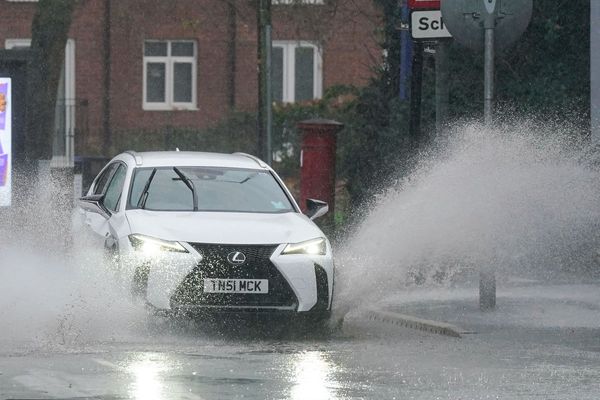WASHINGTON _ The White House wants to grow the Air Force. Congress wants to send money home for defense equipment programs built in lawmakers' districts.
Those two goals will likely have to compete for scarce financial resources in the near future _ but a $667 billion defense spending bill Congress planned to approve Wednesday will jump start orders on dozens of new planes the Pentagon did not request, giving lawmaker's pet projects the inside track.
The defense legislation Rep. Kay Granger, R-Texas, shepherded through Congress includes funding for 16 additional F-35 aircraft _ assembled in her Fort Worth district _ as well as other models.
It's the first comprehensive defense funding bill Congress has passed on time in more than a decade _ thanks in part to Granger's work divvying funds for projects in her colleagues' districts.
But it comes as the Pentagon is laying out ambitious plans to add personnel and change its national defense strategy, which defense experts say could be derailed by expensive projects Congress is hurrying to get started.
"I don't see how the Air Force is going to be able to grow the force and modernize the force at the same time ... given any kind of realistic fiscal constraints," said Todd Harrison, director of Defense Budget Analysis and the director of the Aerospace Security Project at the nonpartisan Center for Strategic and International Studies.
"When you get into a budget crunch, the most expedient thing to do to save money is to cut back on your acquisition programs," said Harrison. "Given the programs that are currently in production and programs that are ramping up ... I don't know that they have a lot of flexibility in them."
This month Air Force Secretary Heather Wilson told attendees at the branch's annual Air, Space & Cyber Conference that the force needs to grow by 24 percent and would need an additional 40,000 personnel to meet the Trump administration's defense plans.
Dan Grazier, a former Marine Corps captain and fellow at the nonprofit defense watchdog group Project on Government Oversight (POGO), called that projection a "worthy goal" to keep the force "large enough to be operationally useful."
"(But) if you want to grow the Air Force, and you want to grow the fleet to populate that force structure, you can't do it when you're spending $150 million per aircraft for these things," Grazier added of the F-35s.
Congress' defense spending bill for the 2019 fiscal year, which begins Monday, includes $4.8 billion worth of unrequested equipment _ commonly divvied out between congressional districts to bring lawmakers on board.
Along with funding for additional F-35 aircraft _ pieces of which are built in as many as 350 congressional districts _ it also includes money for eight Air National Guard C-130J aircraft, six Navy and Marine Corps V-22 Osprey aircraft, two Navy E-2D aircraft and six AH-64E Apache helicopters above the levels set by the nation's defense leaders.
The plan does not account for operation and maintenance for the additional planes. POGO estimates $5 million will be needed for each F-35 per year.
"That will happen in a future budget," said Harrison. "You add additional aircraft this year, it will be a few years before they're actually delivered and (the Department of Defense) actually has to start to pay for the operation and maintenance for it."
Department of Defense spokesman Lt. Col. Mike Andrews said Wednesday that "the department is thankful to Congress for appropriating funds to help replace aging fourth generation U.S. Air Force fighter aircraft, most which are over 40 years old."
Speaking to reporters on Capitol Hill Wednesday, Granger called the bill a badly needed boost to the nation's military.
"(Secretary of Defense General James Mattis) said the money is important, but getting it to us on time where we have the time to plan and to build is really the most important thing," said Granger, whose work drew praise from GOP leaders.
The veteran budget-writer, who chairs the House's panel on defense appropriations, said her staff sorted through 6,600 requests from colleagues for projects in their districts, and "were able to fit that in in most cases."
"Congress keeps adding more plans for the F-35 program than requested every year ... I think that's a sign that the program has a lot of political support now," said Harrison, the defense expert. "Whether the Air Force wants to or not, they're going to continue along their plan for the F-35."







